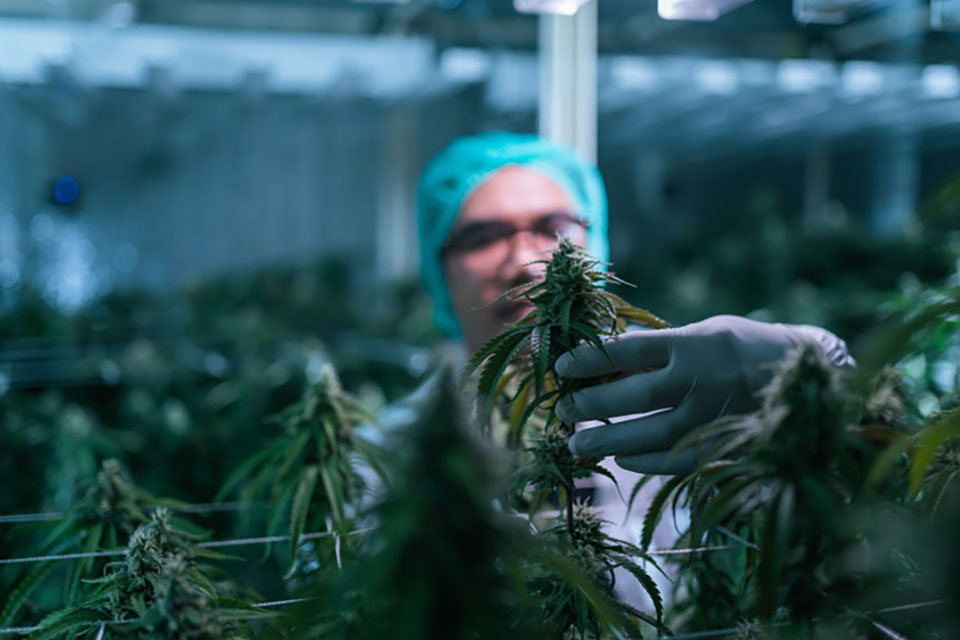
Re-vegging, a term that may be unfamiliar to some, is a valuable technique in the world of cannabis cultivation. Home growers in the USA are constantly seeking ways to improve their growing practices, and re-vegging is one method that can help them achieve better results.
What is Re-Vegging?
The term re-vegging (or re-vegetating) refers to the process of forcing a marijuana plant that has finished its flowering stage back into its vegetative stage. This practice is specifically useful for cannabis because the plant has the unique ability to return to its vegetative state after completing its flowering cycle.
Purpose of Re-Vegging
The primary purpose of re-vegging is to allow for the cannabis plants to produce more than one harvest. Re-vegging a cannabis plant also allows the grower to clone the plant from the new growth that arises after forcing the plant into its vegetative cycle again.
Benefits of Re-Vegging for Home Growers
The re-vegging technique offers a range of benefits for home growers, making it a popular choice among cannabis enthusiasts. It allows growers to get multiple yields from a single plant, maximizing their harvest without starting from seed each time. This saves time and resources and allows growers to maintain the genetics of a particularly successful or high-quality plant.
How to Re-Veg Weed
The re-vegging process isn’t overly complicated, but it does require a degree of precision and patience.
Step-By-Step Guide to the Re-Vegging Process
The first step in the re-vegging process is choosing the right plant. It is usually best to select healthy plants with excellent growth patterns and high-quality yields.
Once you’ve identified your plant, the second step is to harvest most—but not all—of your buds. Leave some lower buds unharvested, as this will encourage new vegetative growth.
After harvesting, change the plant’s light cycle back to a vegetative growth schedule. This typically involves increasing the light exposure to 18-24 hours daily. The long light exposure triggers the plant to resume vegetative growth.
Monitor your plant closely for new growth. This can take anywhere from two to four weeks depending on the strain and overall health of the plant. The first signs of re-vegging are usually single-fingered leaves starting to grow at the buds.
Once you observe new growth, you can treat the plant just like you would during its normal vegetative stage. Regular feeding, watering, and monitoring of the plant’s health will ensure a successful re-vegetative cycle.
When to Re-Veg Weed
There are several factors to consider when deciding when to re-veg your cannabis plant. Some of these factors include the plant’s overall health, the quality of the previous yield, and your personal cultivation goals.
Plants that have displayed good health throughout their life cycle and have produced a high-quality yield are prime candidates for re-vegging. On the other hand, plants that have struggled with disease, pests, or stressful environmental conditions may not respond well to re-vegging, and it might be more beneficial to start anew with seeds.
Your goals as a cannabis grower can also influence your decision. If you’re looking to replicate the genetics of a superior plant or aiming for multiple yields from a single plant, then re-vegging is a viable option. However, if your priority lies in experimenting with different strains and genetics, starting from seed may be more appropriate.
Re-Vegging Techniques and Best Practices
Some various techniques and practices work best when planning to re-veg your cannabis plant.
Different Methods for Re-Vegging Cannabis Plants
Two primary methods growers often use for re-vegging are monster cropping and simple re-vegging.
Monster cropping involves taking clones from a flowering cannabis plant and reverting them to their vegetative state. This method is ideal for creating bushy plants with multiple branches and can greatly increase overall yield.
On the other hand, simple re-vegging entails forcing the entire harvested plant back into a vegetative state. This strategy is generally used to reproduce a plant with desirable traits.
Re-Vegging and Sustainable Cannabis Cultivation
Re-vegging plays a significant role in promoting environmental sustainability in cannabis cultivation. It does so by reducing the need for new seeds and limiting the overall resource consumption. This includes water and energy for seed production and transportation, reducing the carbon footprint associated with cannabis cultivation.
Re-vegging is beneficial to individual growers and contributes to promoting more sustainable practices in the wider cannabis industry. By preserving the plant’s genetic material, growers can ensure the survival of specific strains. This helps increase genetic diversity, which is essential for the health and resilience of the cannabis gene pool.
Exploring Re-Vegging Techniques When Growing From Seed
For home growers looking to take their cannabis cultivation to the next level, re-vegging offers a wealth of opportunities. Whether you are just starting or looking to refine your techniques, incorporating re-vegging into your cultivation practices can bring enhanced yields, resource savings, and the opportunity to preserve the genetics of your best plants.



